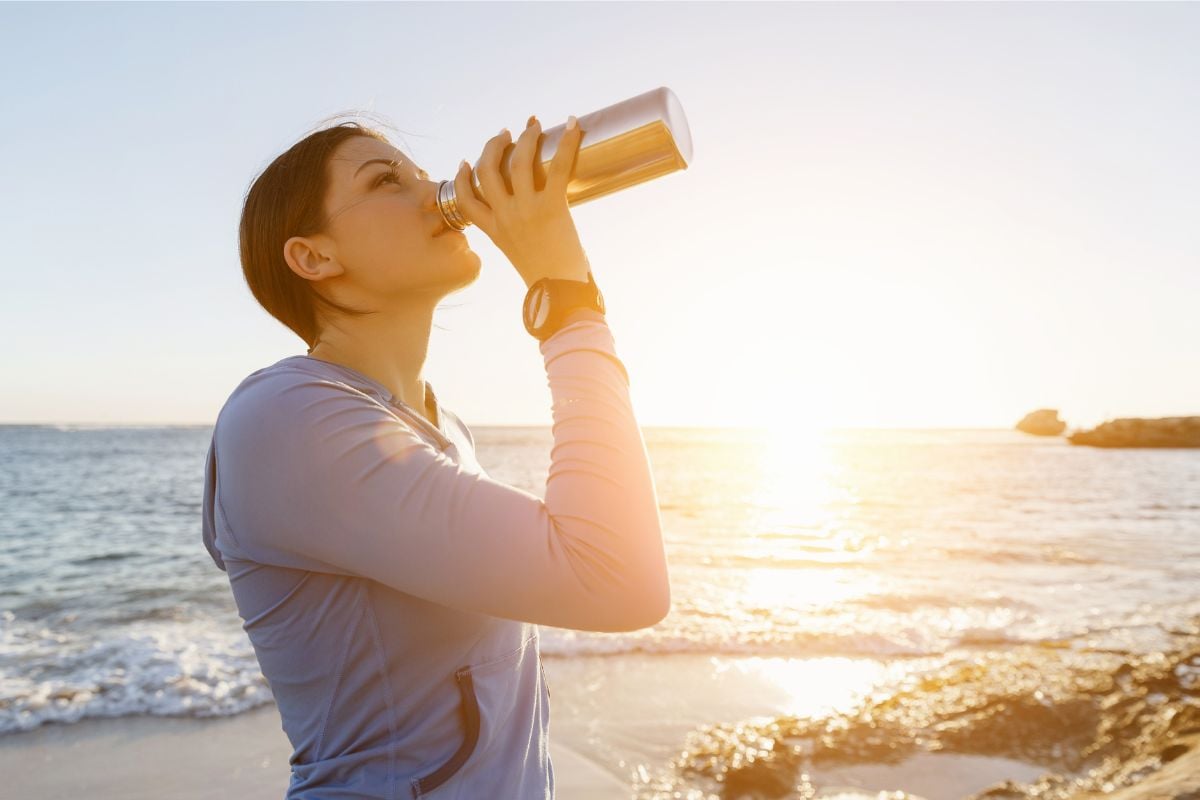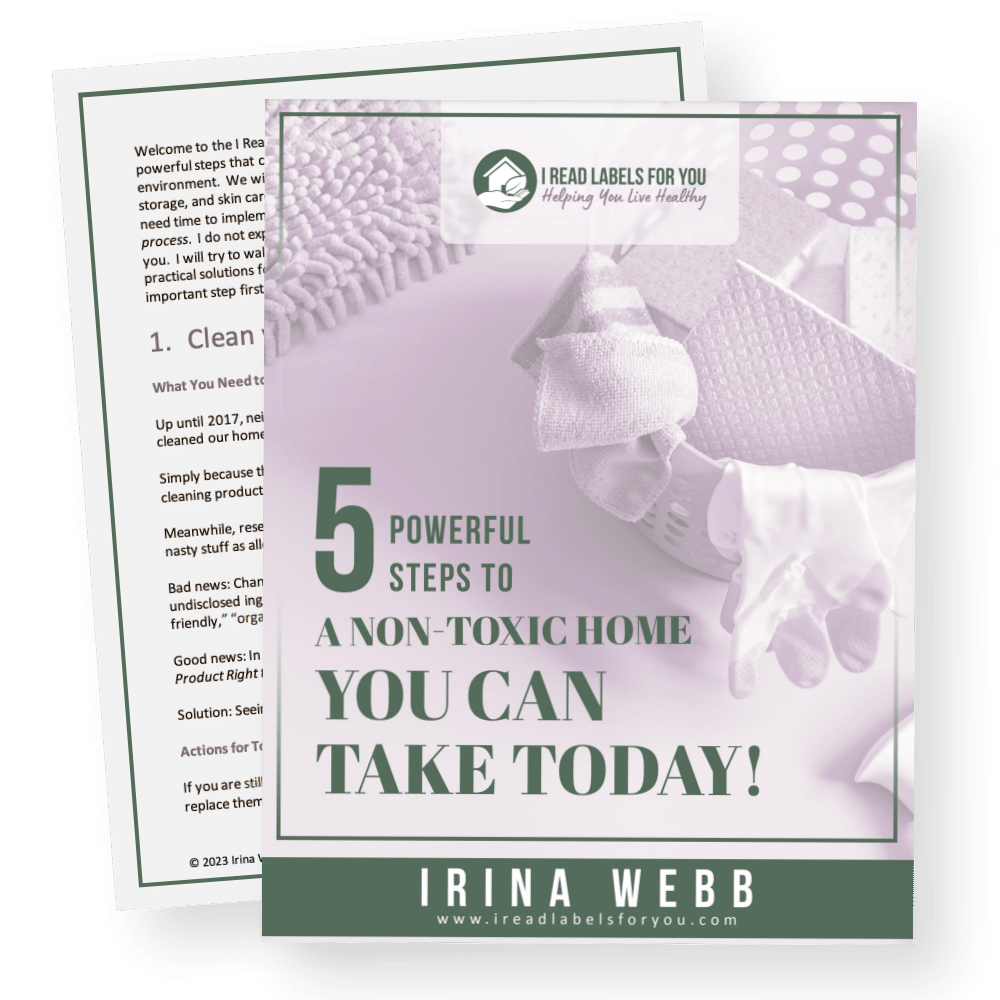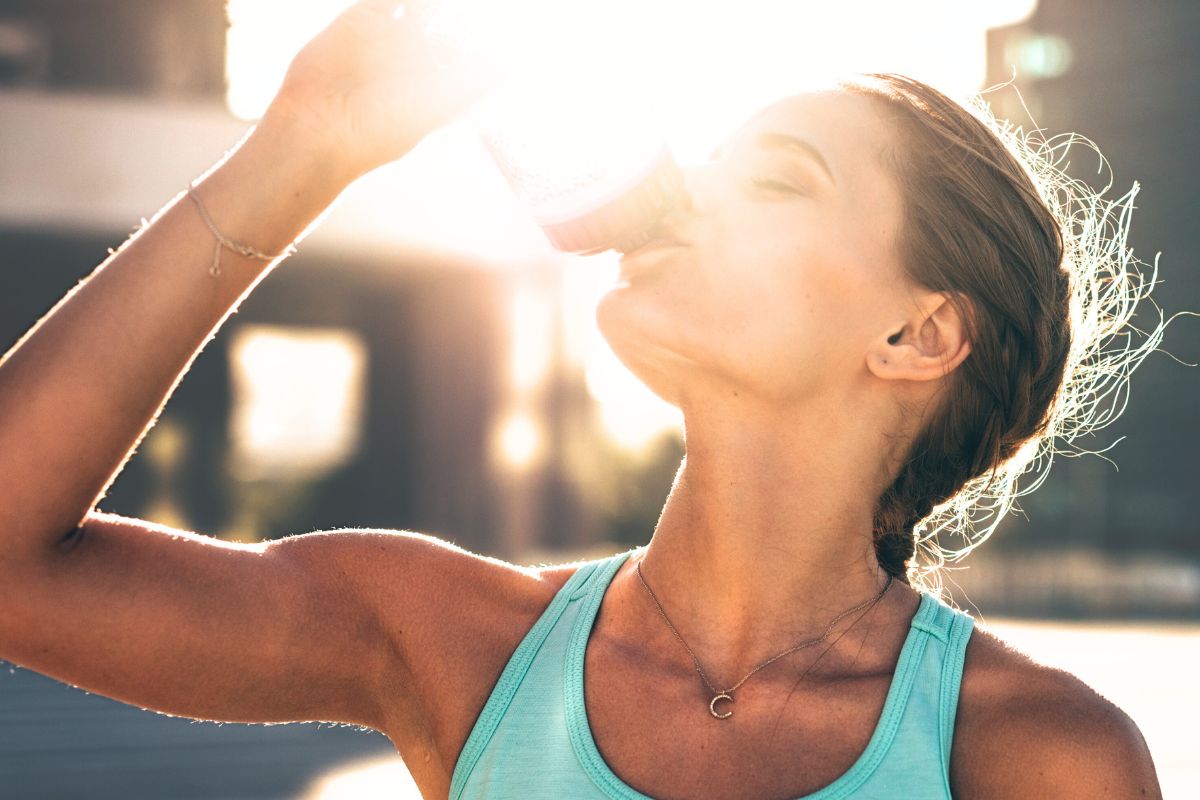Best And Safest Water Bottles

Picture this: crystal-clear, ice-cold water quenching your thirst on a hot summer day, or a warm, soothing sip of tea during a chilly winter morning. Now imagine enjoying these moments while knowing you’re contributing to a cleaner, greener Earth. That’s the magic of the reusable water bottle, a small, everyday hero that not only elevates your hydration game but also plays a crucial role in reducing plastic pollution and conserving resources.
Furthermore, opting for reusable non-toxic water bottle materials is an important consideration. These eco-conscious alternatives help mitigate the harmful impact of single-use plastics on the planet. They also safeguard our well-being by ensuring that the water we drink remains free from harmful contaminants.
Additionally, they are great for travel. Indeed, airports around the country are equipped with filtered water outlets where you can refill your bottle before boarding your flight. And if you live in a desert or spend a lot of time outside, they will save you both time, money and landfill space. Even if you recycle, studies show that most plastics placed in recycle bins end up in the landfill. Reusable water bottles will become another thing you won’t leave home without.
In this blog post, I dive into the compelling reasons that underscore the importance of choosing the best materials for water bottles and list the specific safest water bottles currently available. In addition, beyond merely reducing plastic waste, they also save you money! Without a doubt, sturdy reusable water bottles are designed to last for years. Many bottles can hold hot, cold, and room-temperature beverages, minimizing the need for more containers. With that said, let’s explore the types of water bottles and which materials are the safest!
Best And Safest Water Bottles
Types Of Water Bottles
Various types of reusable water bottles offer pros and cons in terms of functionality, price, style, and drinking method. When determining a product’s safety, it is important to consider the layer that is in direct contact with the water as it is the primary venue for potential leaching. Today, we’ll review the most common materials used:
- plastic
- aluminum
- silicone
- stainless steel, and
- glass.
Are Plastic Water Bottles Safe?
A vast amount of literature is available that clearly indicates that whether you choose to drink from disposable or reusable water bottles, plastic simply is not the safest water bottle material.
To begin, plastic water bottles leach microplastics into the water we consume. And studies show that microplastics are indeed harmful to our health (source). For example, a 2021 study stated that drinking water bottled in plastic is one of the greatest sources of microplastic exposure. According to the study, microplastics are a double threat. First, their tiny size allows them to move across biological membranes and correlates with inflammation, endocrine disruption, and other disorders. Second, microplastics contain harmful additives such as phthalates, bisphenols (like BPAs), and organotins that contribute to a host of health concerns.
BPA-free plastic water bottles
Interestingly, people often believe that BPA-free plastic water bottles are safe. As I discussed in my post Is Spring Water Safe To Drink?, BPA-free plastic simply means that different bisphenols were used in place of BPAs. For instance, a 2018 study concluded that Fluorene-9-bisphenol (BHPF) used in BPA-free plastic water bottles exhibited strong anti-estrogenic activity in mice. In addition, a 2015 review concluded that “BPS and BPF are as hormonally active as BPA. And they have endocrine-disrupting effects.”
Understandably, you may be wondering if these concerns apply to all plastics. I reviewed this in my Plastic Plates blog post and found that almost all commercially available plastics leach synthetic estrogen. Thus, in my opinion, it is a good idea to avoid plastic when searching for the safest water bottles. If you must use plastic, I would personally suggest using a reusable water bottle for the health of our planet. As I mention in my Are Plastic Water Bottles Safe? blog post, only a very small percentage of what we place in a recycling bin actually gets recycled.
Some examples of plastic reusable water bottles include:
- YETI Yonder
- Nalgene Wide Mouth Water Bottle, and
- OLDLEY 32 oz Water Bottles.

Are Aluminum Water Bottles Safe?
Next, when choosing the safest water bottle material, please note that aluminum drinking bottles are not the best option.
Although the negative effects of elemental aluminum on our health remain somewhat controversial, certain concerning associations have been made. For example, while it is not classified as a known carcinogen, research suggests a potential link between aluminum and Alzheimer’s disease (source). Furthermore, aluminum may contribute to the depletion of essential minerals. Such as phosphorus, calcium, magnesium, and iron in the body (source). What’s more, the bioaccumulative nature of aluminum means that it can accumulate in the body over time, raising further health concerns (source).
Given these considerations, I believe it is prudent to be cautious about using aluminum drinking bottles. And to consider safer alternatives that do not pose potential risks to our health and well-being. Read more about my thoughts on aluminum in my Non-Toxic Baking Sheets blog post.
Examples of aluminum reusable water bottles include:
- Sigg Aluminum Water Bottle
- Chef Craft Select Aluminum Water Bottle, and
- Laken Futura Aluminum Water Bottle.
Are Silicone Water Bottles Safe?
As you may have noticed, silicone reusable water bottles have emerged as a trend. Mostly, they are marketed as collapsible, and handy for when you have limited space, such as when you are hiking or camping. Silicone is lightweight, comes in several colors, and is shock-resistant. However, in my opinion, silicone is not the safest water bottle material.
First, it is possible that silicone can leach harmful additives, such as siloxanes, into food (or beverages) it comes in direct contact with when heated. As I discussed in my Non-Toxic Baking Sheets blog post, a recent European study concluded that some siloxanes are considered of higher concern than others. And not all silicone samples raise the same concerns.
Evidently, there is a need for more research on silicone in food and beverage applications before one can confidently call it a safe material. Especially, when many consumers use their bottles for hot beverages. Or leave them in hot vehicles where leaching is more likely to occur. Therefore, if you find yourself needing to use a silicone bottle, I suggest adding ice cubes or only using it to store cold water.
Some examples of silicone water bottles include:
- Nefeeko Collapsible Water Bottle
- E-Senior Collapsible Water Bottle, and
- Special Made Collapsible Water Bottle.

Best Materials For Water Bottles
When it comes to the safety of reusable water bottle materials, two options stand out for their non-toxic properties and environmental friendliness. Some of the safest materials commonly used for reusable water bottles are:
- stainless steel, and
- clear glass.
Are Stainless Steel Water Bottles Safe? Yes!
I believe stainless steel water bottles are among the safest water bottles as they are non-reactive. Studies suggest that no leaching concerns would happen with a typical stainless steel water bottle use. However, there are some concerns of which to be aware.
First, stainless steel water bottles are commonly sealed with a lead dot on the bottom exterior and then covered with a cap or paint for safety. In my opinion, this dot is concerning if it becomes exposed (i.e., the cover breaks off if the bottle gets dropped repeatedly), allowing the lead dust from the dot to transfer onto hands or food. Therefore, if you own a stainless steel water bottle with a dimple or cap on the bottom exterior, it is important you monitor that it stays intact. Note that the lead concern is only with the exterior.
Such brand as Bindle Bottle sold their stainless steel water bottles with a completely exposed lead sealing dot. According to Ashita Kapoor, an associate director of product safety at Consumer Reports who oversaw the tests, the Bindle water bottle has “exposed lead levels that are approximately 1,100 times that of the levels legally allowed in many consumer products.” This illustrated the importance of a properly covered exterior lead dot as well as the lack of regulations in place.
The takeaway from this is that stainless steel itself is a safe material. As long as it is manufactured in a secure manner, it is an excellent reusable water bottle choice. Read on to find out which stainless steel brands I recommend!
Best Stainless Steel Bottles
In my research, two reputable brands have gained recognition for producing high-quality stainless steel water bottles that prioritize safety, durability, and sustainability. Here are a few of the best brands known for their stainless steel water bottles:
Klean Kanteen
Klean Kanteen is a brand I have recommended for years. Not only are Klean Kanteen’s non-insulated and insulated bottles lead-free, but they are also lightweight, chip resistant, and come with a variety of BPA-free, child-friendly, and plastic-free spouts/lids. I personally love their bottle with a bamboo cap!
Ideally, water bottles should not have any plastic that touches the water you drink. In practice, it is not always easy to find such bottles. If possible, buy your water bottles in person so you can inspect the caps. The best water bottles have a cap with stainless steel lining. Although the exterior may be made of plastic. While it’s not always possible to avoid plastic completely, you can minimize your contact with plastic.
Klean Kanteen’s bottles are dishwasher safe, cupholder friendly, and the spout options are removable. This makes them extremely easy to clean thoroughly with a bottle brush if you prefer. Klean Kanteen offers a variety of sizes, including kids’ cups, bottles, and even wide-mouth baby bottles!
You can find Klean Kanteen stainless steel water bottles on the Klean Kanteen website or in the Water Bottles section of the I Read Labels For You Amazon Shop.
Hydro Flask
In 2017, Hydroflask made changes to its production line and became the only vacuum insulated stainless steel water bottle brand without exterior lead sealing dots. In my opinion, this is the best insulated bottle brand for standard or wide-mouth bottles that can keep water cold for up to 24 hours. Hydroflask’s straw lids open and close easily, and the bottle lids are leak proof. Like Klean Kanteen, Hydroflask containers are also dishwasher-safe and come in a variety of colors.
You can find Hydro Flask stainless steel water bottles in the Water Bottles section of the I Read Labels For You Amazon Shop.

Are Glass Water Bottles Safe? Yes!
Unsurprisingly, clear glass stands out as one of the best materials for water bottles. Notably, clear glass is an inert material. And will not leach harmful substances into your water or leave unwanted flavors or odors in your water. However, colored glass or glass with painted markings may potentially contain heavy metals like lead or cadmium (source and source). Therefore, always opt for clear glass or third-party tested options. Learn more about the best glass choices in my Lead Free Glassware Review.
To further enhance their functionality, many glass water bottles come with silicone sleeves, making them ideal for on-the-go use or as baby bottles; the silicone sleeves provide some level of protection if you drop the bottle. I personally have accidentally dropped glass water bottles that have survived (but I have also broken at least one).
With great effort, Lead Safe Mama, a heavy metal safety advocate, created an initiative to shed light on this concern, particularly in the case of glass baby bottles. As you may know, there are restrictions on consumer items intended for children to be free of lead paint. However, this law does not apply to most adult consumer goods, including water bottles. To ensure maximum safety, the best option for the safest water bottles is to choose clear glass bottles with no painted markings or logos, providing you peace of mind as you stay hydrated in a toxin-free manner.
Best Glass Water Bottles
Thankfully, many clear glass reusable water bottles have the potential to be non-toxic if they are free of painted logos and designs. Life Factory is a well-known brand that meets all of these requirements. Their glass bottles come with silicone sleeves, are dishwasher safe, and offer a variety of sizes and lids for babies, children, and adults.
You can find different Life Factory glass water bottles in the Water Bottles section of the I Read Labels For You Amazon Shop.
Summary About Safest Water Bottles
The Non-Toxic Water Bottles Are Stainless Steel And Clear Unpainted Glass.
In conclusion, when it comes to choosing the safest and most environmentally responsible water bottle materials, I believe that stainless steel and glass stand head and shoulders above the rest. As discussed, plastic bottles leach microplastics and even BPA-free water bottles may contain hormone-disrupting chemicals. Aluminum water bottles are controversial and linked with a series of health concerns.
Thankfully, properly designed stainless steel bottles offer durability and insulation. They are also free from toxic contaminants like lead and phthalates. In addition, clear unmarked glass provides a transparent, non-reactive surface, devoid of heavy metals and toxic paints. By opting for stainless steel or clear unmarked glass water bottles, you can confidently hydrate yourself while minimizing your environmental impact and prioritizing your health.

Download The Free Guide!
5 Powerful Steps To A Non-Toxic Home
Join our informed consumer community and get our free guide the “5 Powerful Steps To A Non-Toxic Home”.

 Written by
Written by 





What about new polymer materials like Tritan?
We mention Tritan in the “More Info” section of this listing: https://ireadlabelsforyou.com/product/water-filter-pitcher/